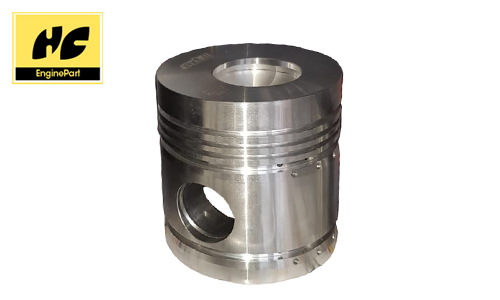Piston blank forming method
2020-11-30
The most common production method for aluminum piston blanks is the metal mold gravity casting method. In particular, the current metal molds have begun to be processed by CNC machine tools, which can ensure high blank size accuracy, high productivity and low cost. For the complicated piston cavity, the metal core can be divided into three, five or seven pieces to mold, which is more complicated and not durable. This gravity casting method sometimes produces defects such as hot cracks, pores, pinholes, and looseness of the piston blank.

In strengthened engines, forged aluminum alloy pistons can be used, which have refined grains, good metal streamline distribution, high strength, fine metal structure and good thermal conductivity. So the piston temperature is lower than that of gravity casting. The piston has high elongation and good toughness, which is beneficial to alleviate stress concentration. However, hypereutectic aluminum-silicon alloys containing more than 18% silicon are not suitable for forging due to their brittleness, and forging tends to cause large residual stress in the piston. Therefore, the forging process, especially the final forging temperature and heat treatment temperature must be appropriate, and most of the cracks in the forged piston during use are caused by residual stress. Forging has strict requirements on the shape of the piston structure and high cost.
The liquid die forging process began to be used in production around the Second World War, and has been promoted and applied to varying degrees in various countries around the world. It has achieved relatively rapid development in the past ten years. my country began to apply this process in 1958 and has a history of 40 years.
Liquid die forging is to pour a certain amount of liquid metal into a metal mold, pressurize with a punch, so that the liquid metal fills the cavity at a much lower speed than in die casting, and crystallizes and solidifies under pressure to obtain a dense structure. Products without shrinkage cavity, shrinkage porosity and other casting defects. This process has both the characteristics of casting and forging.